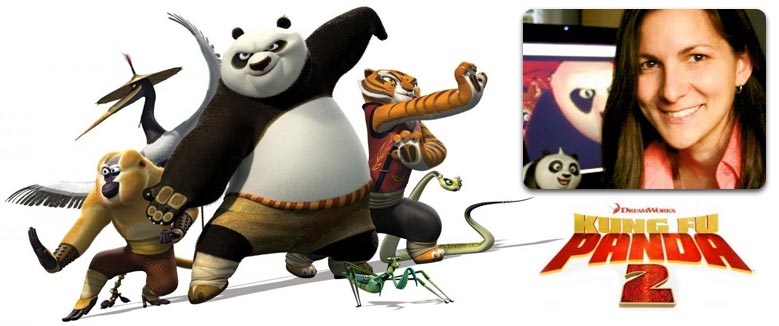
Dreamworks Animator Rebecca Perez
Tell us about yourself Rebecca; where are you from and how old were you when you discovered that you wanted to be an Animator?Hi Animation Arena, thank you for having me. I'm originally from Miami, Florida where I was born and raised. I first became aware of animation at the age of 15 or so. I remember watching a commercial on television with an animated Listerine bottle. I remember thinking that it looked amazing and so life like, it was in CG, but at the time I wasn't even sure I knew what I was looking at but I truly was amazed and knew I wanted to learn more. Years later I learned that the commercial I had seen was created by a small studio called Pixar, nuff said.
Are you a traditional artists that turned to 3D Animation or did you just jump right into the 3D Software?
I would consider myself a general artist turned animator. I love all aspects of art such as sculpting, 3d modeling, painting, storytelling, photography and of course animation. When I went to Ringling was the first time I ever animated on a computer.
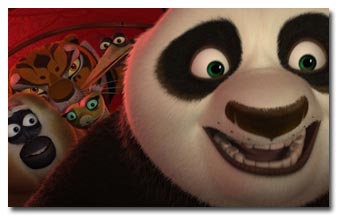 Are you formally trained as an artist or are you self-taught?
Are you formally trained as an artist or are you self-taught?I am formally trained. I first went to Ringling School of Art and Design where I received a BFA in Animation and a Minor in Photography. And then later on decided my animation skills just weren't where they needed to be to work in film so I enrolled in Animation Mentor.
Do you think that artists with a formal education in Animation or Illustration have an advantage over self-taught artists?
No, I think it really depends on the individual person. There are some people who are simply natural animators and that have never needed the formal education, they already know intuitively the animation principles and are amazing animators. Then there are amazing artists who just need the structure or knowledge that the formal education can give them.
How hard is it for a self taught artist to break into the animation business?
I don't think it's any harder for a self taught animator than a formally trained one. The only difference might be the connections you build in the school vs. doing it on your own. But now you have so many sites our there like Animation Arena where you can network and meet people for just about every company out there.
Where do you find inspiration for your artwork?
All around. There's always some new funny youtube clip or inspirational animation circulating around the studio. We at work and my friends are always sending each other new animation shorts and talking about ideas all the time. I guess I constantly find inspiration in those things.
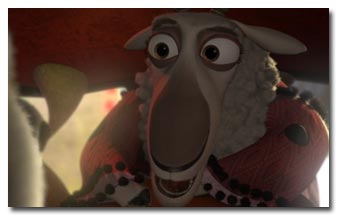 Who's work do you admire?
Who's work do you admire?Good question. There's a lot of animators where I just admire how they can get so much life into their shots. Here's a list of just a few. David Stodolny because his animation is so sincere, fluid and natural. Jason Ryan and Dave Burgess for their whimsical and cartoony yet emotional style. Victor Navone for his technical skills and knowledge of motion, spacing and timing. Dave Hardin and Glen Keane for the realistic and organic approach they deliver in their work. All these animators have a real sense of believability and sincerity in their work that I admire and try to put into my own.
When you made the decision to become an Animator what was the first step you took to make that decision a reality?
I spoke to current animators. Whether by email or face to face I spoke to animators that I admired. There is so much knowledge you can learn from someone who's already accomplished what you are seeking.
How did you get your first paying job in the Animation Industry? Who was your employer and what was your job title?
My very first job was as a "3D Technical Artist" at Lucasarts. I had just graduated from Ringling and to be quite honest, I just wanted to get my foot in the door. To just get the smallest opportunity at a studio where I could grow. Luckily I had a friend who was already working there and she gave my name to another production who was looking for an Entry Level Artist. I basically took the animations created by animators and putting them into the game engine. That's the short of it. It was a great beginner job and helped me learn about every aspect in the game industry. It helped me connect with other animators and gave me production experience that I needed.
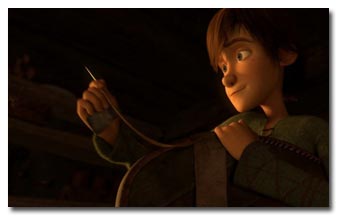 You've worked for some of the heavy hitters in the animation industry; Could you tell us which movies you've worked on and which movie did you have the most fun making?
You've worked for some of the heavy hitters in the animation industry; Could you tell us which movies you've worked on and which movie did you have the most fun making? I've worked on 9 films not including my current one which is undisclosed at the current time. I think the one I've had the most fun working on has been Cloudy with a Chance of Meatballs. The Directors were these young guys who were just starting out and they really took chances and even let the animators come up with a lot of the funny and memorable parts of the film. My second favorite is Kung Fu Panda 2. I felt like I grew a lot in this film I finally felt like I was coming into my own and truly began to feel comfortable with my process and the team.
You are currently working for DreamWorks Animation, Can you describe a typical day for yourself at DreamWorks?
A typical day would be coming in and grabbing a quick breakfast before heading to my desk to check on my overnight renders. I then head into morning dailies where I show my work in front of the director and supervisors. I get notes and head back to my desk. I work on the notes for my shot. Lunchtime rolls around and I head down to the commissary with some friends and eat. We wrap lunch in about an hour and I head back upstairs to continue working on my shot. I sent off a render and get prepared for afternoon rounds (which is the same thing as dailies except at the end of the day) I get a buy off from my lead and submit for afternoon rounds. I meet again with the director and hope that I addressed all his notes. If he's happy he'll approve the shot, if not I'll get some more notes and continue the same process the next day until the shot is approved. There you have it.
What steps should an aspiring Animator take to break into the business?
First thing is get the skills you need. Either go to a college and focus on getting a strong reel or attend online workshops like ianimate.net or classes like animationmentor.com Any one of these options should lead you to work on your animation skills and develop a strong demoreel. That's step one! The next thing would be submitting your work to the different studios and start gathering production experience.
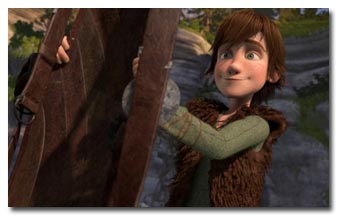 Of all the projects that you've worked on which one are you most proud of and why?
Of all the projects that you've worked on which one are you most proud of and why?
I think I'm most proud of KFP2 because I was such a big fan of the first film that it was a dream come true to work on the second. I never thought that would be possible.
Your most recent film Kung Fu Panda 2 is in theatres now, what was it like working on Kung Fu Panda 2? How long have you been working on this project?
I absolutely loved my experience working on KFP2. I had an incredible lead Marek Kochout and Animation Director Dan Wagner and amazing Director Jen Yuh Nelson. She was very supportive and encouraging. I was brought on at the end of the project when the film was coming to an end so I didn't get to work on it as much as I had hoped but the time I got to spend one I felt like I produced my best work.
What were some of the challenges you faced during the making of Kung Fu Panda 2? And how did you overcome those challenges?
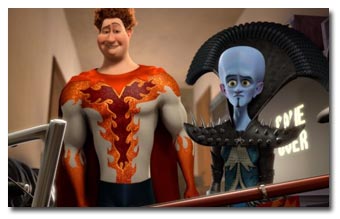 The biggest challenge was coming in at the end of the project and having to ramp up to the speed of production. In order to overcome it I just needed to do the time and really sink my teeth into the work along with being flexible and produce my work quickly!
The biggest challenge was coming in at the end of the project and having to ramp up to the speed of production. In order to overcome it I just needed to do the time and really sink my teeth into the work along with being flexible and produce my work quickly!
Which scenes did you animate in Kung Fu Panda 2?
I worked on the sequence called "City without Kung Fu" and it's the part where the 5 get into the dragon costume and sneak around the city in search of the Kung Fu Masters. I animated the shots where there's a sheep inside the mouth of the dragon along with the cut away shots of the 5 in the dragon. There were a few other shots around the film but these are the most memorable ones.
Do you ever go to the movies and watch one of your own films?
Absolutely! There's nothing like it. We as crew get to watch the films over and over again but always with industry people or the crew that worked on it. There's a certain amount of predictability watching it like this, that's why I enjoy just going into the theater and watching it with a crowd of fans. It's always so exciting to hear them laugh and cheer... especially if it's a shot you worked on.
Of all the Characters you've worked on over the years which is your favorite and why?
Po- because I was such a HUGE fan of the first film. It was a real treat to get to make him come to life!
What was it like to have a film that you worked on nominated for an Oscar?
That is always exciting. 3 of my films have been nominated and one, Golden Compass actually won for Best Visual Effects.
Is there anything that you would like to do as an Animator that you haven't done yet?
I would really like to start on a film at it's early stages and help develop the characters from the ground up. That would be a truly great experience.
Are there any upcoming films that you are excited to see?
Harry Potter and the Deathly Hallows Part 2. I'm a huge huge fan of the books and films and have been looking forward to this film for a long time.
I'm curious to know what you think of some of the new technology being used in the industry today, first what do you think of the new motion capture technology being used in films like Avatar and the upcoming Adventures of Tin Tin, does this technology make an animators life easier? Does it take some of the acting out of the hands of animators?
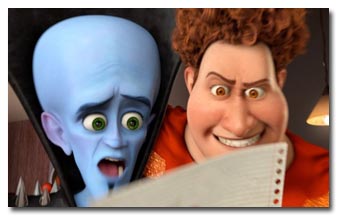 I think there's a time and place for all mediums. I think MoCap in a film like Avatar does it best. There will however always be a place for an animator because there are different looks that each individual film goes for. For example, a film like Megamind or Ratatouille need to be hand animated because of it's whimsical animation. You just can't get that with MoCap. I think used to for an intended purpose MoCap works and doesn't take the acting from the animators but enhances it and gives other kinds of artists the opportunity to work on films. I think there's a place for both.
I think there's a time and place for all mediums. I think MoCap in a film like Avatar does it best. There will however always be a place for an animator because there are different looks that each individual film goes for. For example, a film like Megamind or Ratatouille need to be hand animated because of it's whimsical animation. You just can't get that with MoCap. I think used to for an intended purpose MoCap works and doesn't take the acting from the animators but enhances it and gives other kinds of artists the opportunity to work on films. I think there's a place for both.
Secondly what are your thoughts on the use of 3D in films? Do you think it's here to stay? Do you think it's being used correctly?
I think 3D is great as long as it's done right and in the right films. If you have a big action sci fi film that would be a great opportunity to add additional life to the worlds with 3D. As opposed to a romatic comedy wouldn't necessarily need to use it.
For all the aspiring animators out there what would you say are the top 5 skills that should honed to become a professional animator?
Master the Principles of Animation. Be humble and ask questions. Learn how to create and give a sincere performance in your animation. Be flexible and able to adapt to change. Learn how to manage your time. And lastly have a positive attitude!
So what's next for you Rebecca do you have any upcoming project that we should look out for?
I just finished up on a new Dragon's Holiday Special that will be coming out this Christmas so keep an eye out for that!
Any final words of wisdom for all the aspiring animators out there?
Work smart and hard. And if you set your mind to it there's nothing you can't accomplish.
Visit Rebecca's blog at: www.rebville.com




